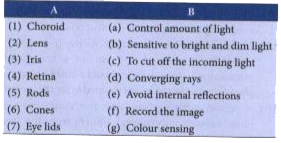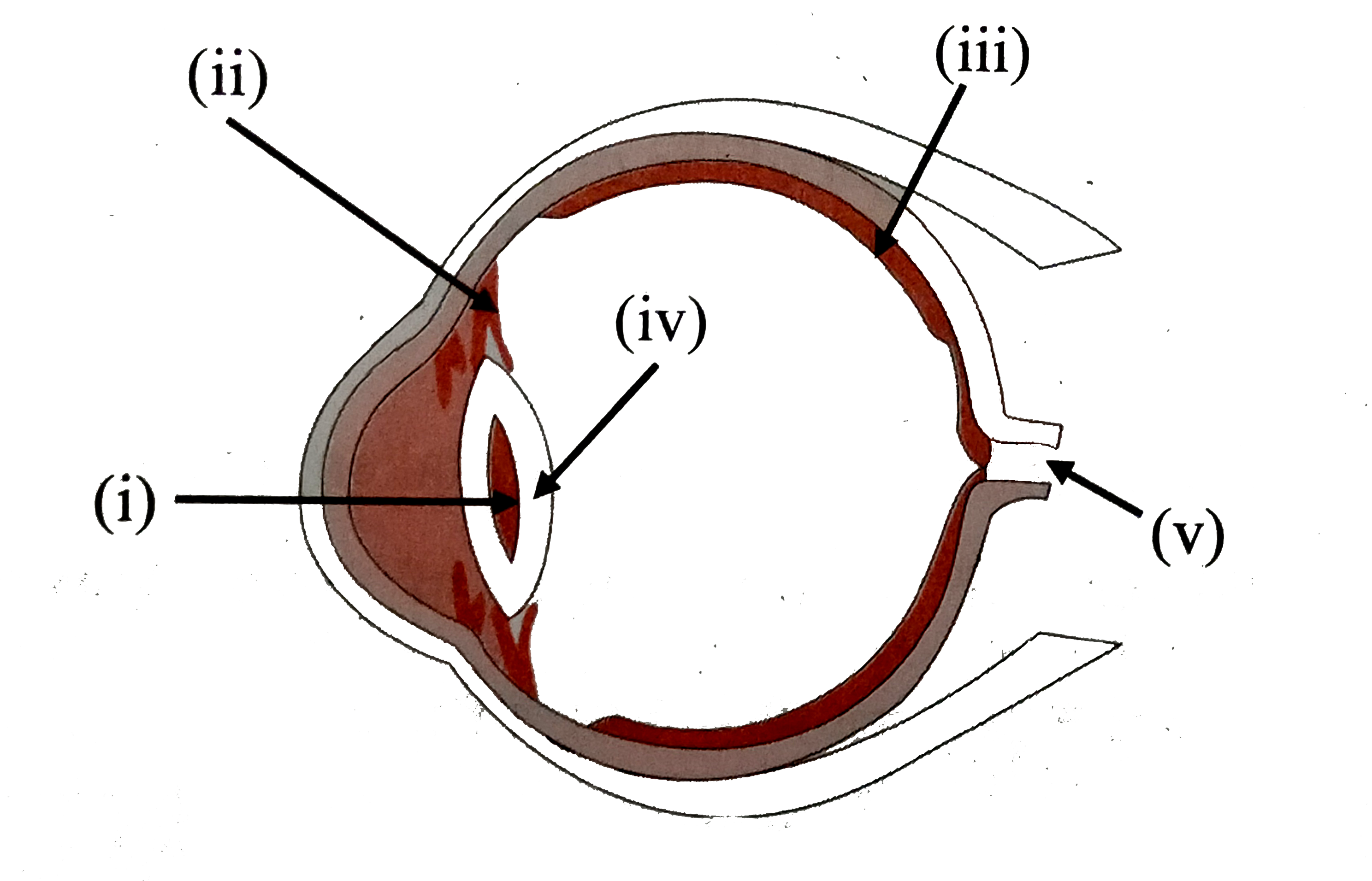What parts of the eye form the focussing apparatus ? How do they achieve their functions ?
Step-by-Step Solution:
1. Identify the Parts of the Eye Involved in Focusing:
The primary parts of the eye that form the focusing apparatus are the cornea and the lens.
2. Understand the Role of the Cornea:
The cornea is the transparent front part of the eye that helps to refract (bend) light rays as they enter the eye. It provides most of the eye's optical power and is responsible for the initial focusing of light.
3. Understand the Role of the Lens:
The lens is located behind the cornea and further refines the focus of light onto the retina. It can change its shape to adjust the focal distance, allowing us to see objects clearly at various distances.
4. Explain the Process of Refraction:
When light rays enter the eye, they are refracted by both the cornea and the lens. This refraction is crucial for forming a clear image on the retina.
5. Discuss Accommodation:
The ability of the eye to adjust its focus for objects at different distances is known as accommodation. This process is facilitated by the ciliary body, which is a ring of muscle that changes the shape of the lens.
6. Mechanism of Accommodation:
When viewing nearby objects, the ciliary muscles contract, allowing the lens to become thicker (more convex), which increases its refractive power. Conversely, when looking at distant objects, the ciliary muscles relax, causing the lens to flatten.
7. Conclusion:
Together, the cornea and lens work in unison to focus light onto the retina, enabling clear vision. The ciliary body plays a critical role in adjusting the lens shape for accommodation.
The primary parts of the eye that form the focusing apparatus are the cornea and the lens.
The cornea is the transparent front part of the eye that helps to refract (bend) light rays as they enter the eye. It provides most of the eye's optical power and is responsible for the initial focusing of light.
The lens is located behind the cornea and further refines the focus of light onto the retina. It can change its shape to adjust the focal distance, allowing us to see objects clearly at various distances.
When light rays enter the eye, they are refracted by both the cornea and the lens. This refraction is crucial for forming a clear image on the retina.
The ability of the eye to adjust its focus for objects at different distances is known as accommodation. This process is facilitated by the ciliary body, which is a ring of muscle that changes the shape of the lens.
When viewing nearby objects, the ciliary muscles contract, allowing the lens to become thicker (more convex), which increases its refractive power. Conversely, when looking at distant objects, the ciliary muscles relax, causing the lens to flatten.
Together, the cornea and lens work in unison to focus light onto the retina, enabling clear vision. The ciliary body plays a critical role in adjusting the lens shape for accommodation.
Topper's Solved these Questions
- BOOK - PRADEEPCHAPTER - NEURAL CONTROL AND CORRDINATIONEXERCISE - Additional Question (Long Answer Question)29videos
NEURAL CONTROL AND CORRDINATION
- BOOK - PRADEEPCHAPTER - NEURAL CONTROL AND CORRDINATIONEXERCISE - Analytical Question With Answer20videos
NEURAL CONTROL AND CORRDINATION
- BOOK - PRADEEPCHAPTER - NEURAL CONTROL AND CORRDINATIONEXERCISE - Additional Question (Very Short Answer Question)48videos
NEURAL CONTROL AND CORRDINATION
- BOOK - PRADEEPCHAPTER - MORPHOLOGY OF FLOWERING PLANTSEXERCISE - Assertion-Reason Type Questions16videos
MORPHOLOGY OF FLOWERING PLANTS
- BOOK - PRADEEPCHAPTER - PLANT GROWTH AND DEVELOPMENTEXERCISE - Assertion -Reason type question13videos
PLANT GROWTH AND DEVELOPMENT
Similar Questions
Knowledge Check
- Question 1 - Select One
Distance between the focussing parts of the two human eyes is about.
A2 cmB4 cmC7 cmD10 cm. - Question 2 - Select One
What is the function of the vestibular apparatus of the internal ear ?
AIt equalizes air pressure on the two sides of the ear drum.BIt maintains equilibrium of the bodyCIt collects sound vibrations from air.DIt acts as auditory receptors. - Question 3 - Select One
What is the correct sequence of the parts of the eye that the light rays cross in reaching the retina
APupil → Cornea → aqueous humour → lens → vitreous humourBLens → cornea → aqueous humour → vitreous humour → pupilCAqueous humour → vitreous humour → cornea → pupil → lensDCornea → aqueous humour → pupil → lens → vitreous humour
Match the parts of the human eye with its function .
 View Solution
View Solution(a) What are the parts of eye which constitute its focussing part?
(b) What causes maximum refraction ?
(c ) What is the function of lens of eye ?View SolutionWhat are holoenzymes ? How are they formed ? How do they work ?
View SolutionLabel the parts of the following diagram of the human eye and state the functions of those parts.
 View Solution
View SolutionHow do the eyebrows protect the eyes ?
View Solution

